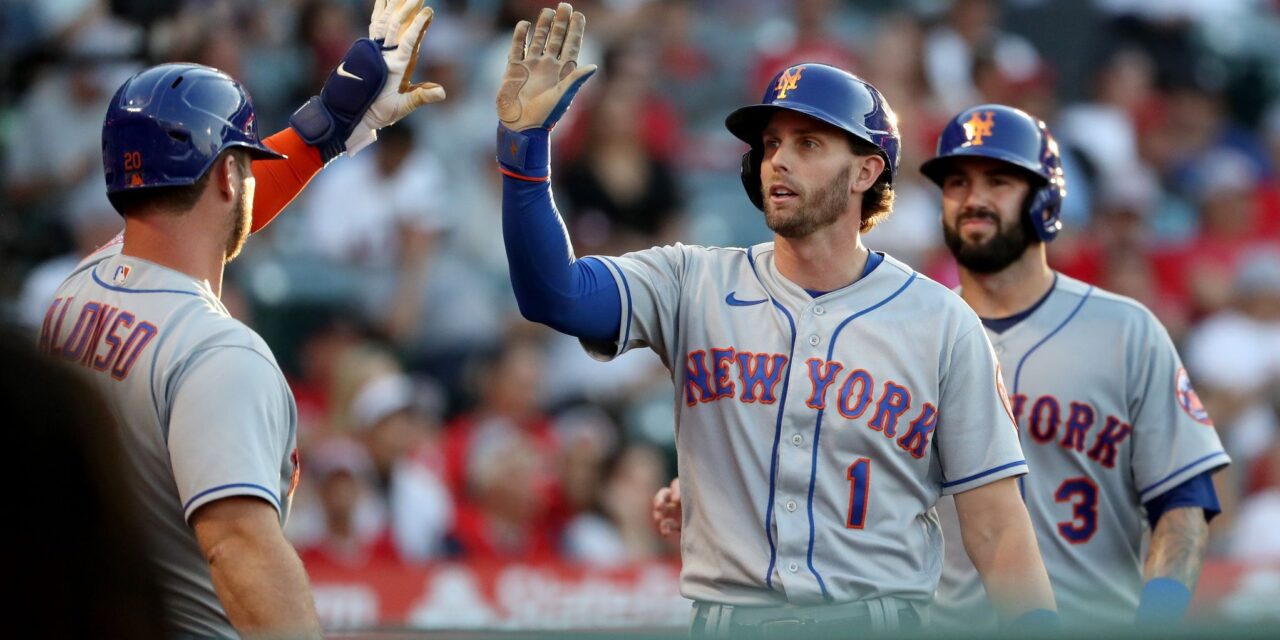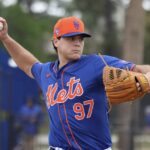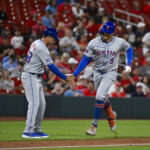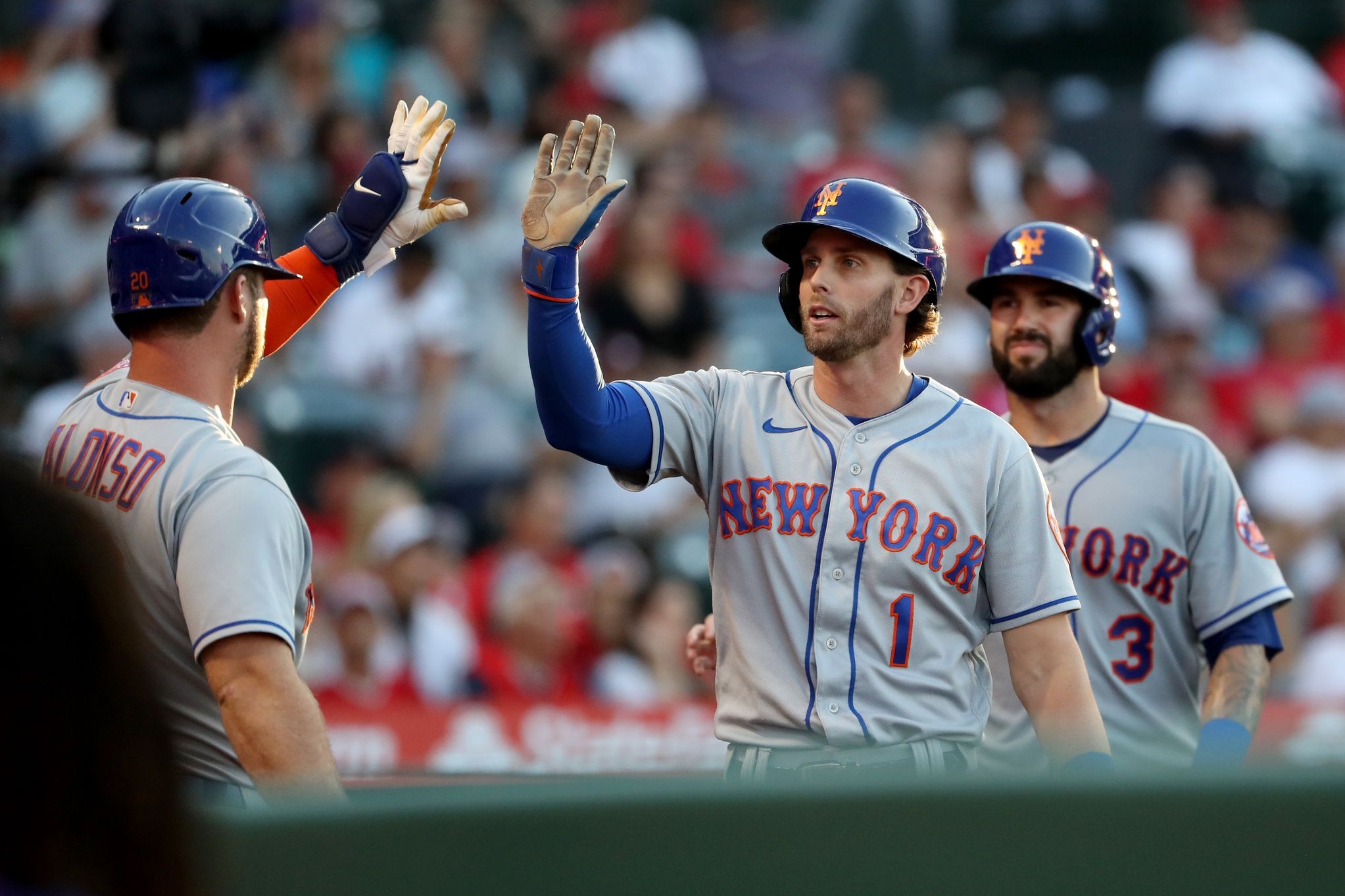
Credit: Kiyoshi Mio-USA TODAY Sports
The New York Mets were supposed to handle the Washington Nationals at home. Instead, they lost two out of three, were lucky to avoid getting swept, and are ill-prepared for the upcoming four-game divisional showdown against the Atlanta Braves.
In many ways, this series was reminiscent of the team’s mid-September fugue last season when they lost five out of six games to the Nationals and Cubs. Although the starting pitching was a big problem, it started with the Mets scoring one run in 18 innings over the first two games of the series.
3 Up
Baby Boomer
Brett Baty is starting to show the potential that made him the Mets’ No. 2 prospect and the 18th-best prospect in all of baseball. After forcing his way to the majors by virtue of tearing up Triple-A, Baty got off to a slow start in the majors. However, he has now reached safely in six straight games and had the best game of his young career in the series finale, going 3-for-3 with a walk and his first home run of the season.
Buck Showalter continues to sit Baty against lefties, but the young third baseman is making his case to play every day. Baty is now slashing .321/.387/.464/.851, albeit in just 31 plate appearances. Yes, he has an absurd .444 BABIP, which will not continue; yes, his average launch angle is still in the 10-degree range. Still, over his last seven games, he’s slashing .348/.423/.522/.945 and daring the Mets to even consider sending him back down to the minors. In this series, he went 4-for-7 with two walks and two extra-base hits.
If Baty can keep this up and add a little more consistent extra-base ability to his major league repertoire, it could be a huge boost for a Mets lineup that is desperate for power.
Squirrel Season
Jeff McNeil has officially told the entire Mets fan base that he’s shaken off the early-season rust. McHits is back in business, going 4-for-12 in the series and raising his batting average above .300. McNeil also continues to prove his value with the glove, shifting from second base to the outfield on a regular basis to help the team maximize matchups and availability.
There’s a reason that McNeil was second in fWAR on the Mets last season: between his bat and glove, he truly is one of their most valuable players. He helped save the team from getting swept with a go-ahead RBI triple in the bottom of the eighth in the third game of the series, earning the loudest Citi Field ovation in three days.
Team Resilience
After an absolutely miserable first two games, the Mets thought they had the third one in control after taking a 7-3 lead. All the wind left their sails when Brooks Raley surrendered a go-ahead grand slam to C.J. Abrams in the eighth inning, giving Washington an 8-7 lead. It appeared that New York was heading for their second three-game series sweep of the season.
However, the Mets battled back. Pete Alonso came through as he did so often last year, tying the game with an RBI double in the bottom of the eighth. McNeil gave the Mets the lead with an RBI triple, and David Robertson locked down the save to salvage the series.
It wasn’t pretty or easy, but making the most of a bad situation is going to be key for this team. They have faced much adversity through the first month of the season but are still 15-11. Coming right back after blowing the game was a way to show themselves that all is not lost in the battle for 162. If they can ride the storm and claw out victories, this team can still find its rhythm.
Atlanta will sorely test that resilience, but for one night, the Mets can keep their chins up.
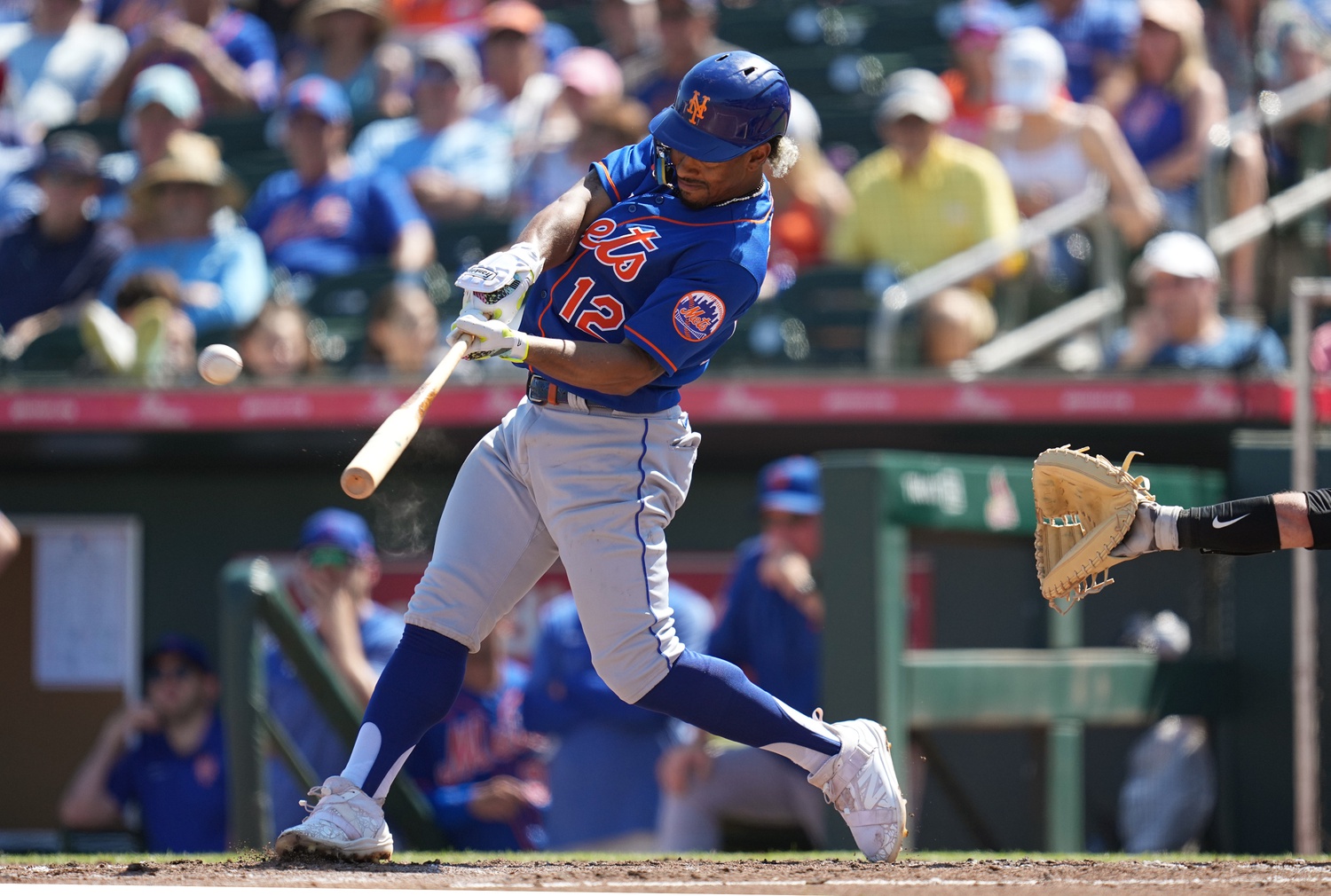
Jim Rassol-USA TODAY Sports
3 Down
Offensive Lull
While the Mets broke out for nine runs in the series finale to save a total disaster, the aforementioned one run in 18 innings was putrid. Equally bad was the ratio of nine hits vs. 28 strikeouts. The team continues to suffer against left-handed starters, posting one meager run on four hits with 10 strikeouts against MacKenzie Gore. They are batting .207/.300/.349 against southpaw starting pitchers.
Even with those nine runs scored in the final game, the Mets still averaged just 3.3 runs per game in the series. With a decimated starting rotation, the offense is going to have to pick up the team at times. Scoring 10 runs in three games against one of the worst teams in baseball is not going to cut it.
Francisco Lindor went 3-for-13 (.231) in the series, including 1-for-8 in the first two games. His batting average is now at .222. (He also committed two errors in the series.) Alonso cooled down considerably after a torrid few weeks, going 0-for-8 to start the series and finishing 2-for-13 after breaking an 0-for-19 skid.
As Alonso and Lindor go, so does the Mets’ offense. The team does not have anyone good enough to pick up the slack when both players go cold simultaneously.
With Max Fried, Spencer Strider, Charlie Morton, and Bryce Elder scheduled for the next four games, it could be another long offensive weekend for the Mets.
No Starting Depth
This might as well be in the “3 Down” section chronically. It was another series where Mets’ starting pitching provided no depth and could not put away subpar hitting. Here were the combined pitching lines for José Butto, Kodai Senga, and Joey Lucchesi in the series: 15 innings, 14 hits, seven earned runs, 12 walks, 11 strikeouts, two home runs, 4.20 ERA, 1.73 WHIP, 18.5 pitches per inning. The line isn’t even as bad as the actual pitching was, as Butto and Senga, in particular, fell behind and repeatedly failed to post clean innings or find a putaway pitch.
The Mets’ starters continue to leak baserunners, too. The lowest current WHIP of any Mets starter with at least four starts belongs to Max Scherzer at 1.19; all the others have WHIPs exceeding 1.45. That kind of mark will take its toll on any pitcher, no matter how good they are at stranding runners.
Defensive Specialists Descend
Tomás Nido and Luis Guillorme both have spots on the 2023 Mets due to their defensive prowess. However, neither one has shown it in the early going of 2023.
Nido ranks in the 50th percentile of pitch framing after ranking in the 93rd percentile last season. Defense was supposed to be one of the reasons that Nido is playing over Francisco Álvarez, yet Álvarez’s framing is currently in the 89th percentile. Nido also catches Senga because the Mets don’t want to expose Álvarez to the nasty ghost fork pitch, yet Nido struggled to block it.
Here are the Mets’ pitching splits for when Nido and Álvarez catch:
- Nido: 110.0 innings, 3.93 ERA, 1.34 WHIP, .232/.318/.426/.745
- Álvarez: 83.0 innings, 4.23 ERA, 1.34 WHIP, .240/.340/.359/.699
Although the ERA is somewhat higher with Álvarez, the underlying metrics are fairly similar. While this is not a fair or consistent way to measure the game that each pitcher calls, the fact is that Mets pitchers have not been significantly better with Nido behind the plate. There is little justification for playing Nido regularly at this point despite Álvarez’s early offensive struggles. Nido is not adding much to the Mets right now.
Meanwhile, Guillorme started two of the three games in the series and posted a horrific misplay in which he went in the opposite direction of the ball and several other plays that displayed his range limitations. Guillorme is in the 16th percentile in OAA, which is underwhelming for a player with a 90 wRC+ this season.
With Ronny Mauricio continuing to rake in the minors, it’s becoming harder to understand having Guillorme on the roster. Defense would be the primary concern, but Guillorme is not providing that value, anyway. At least Mauricio has the potential to be a hitting and power threat, even if he strikes out at a far higher rate than the Mets would like.
The Mets begin a four-game series with the Braves on Friday night at Citi Field.


